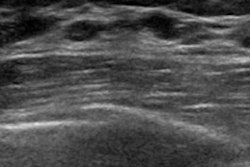Dear Ultrasound Insider,
Thyroid nodules are common, especially among women and older people. But only a fraction of those identified are actually malignant -- thus, underscoring the importance of finding a way to effectively distinguish benign from cancerous nodules.
Ultrasound has long been the go-to modality for investigating thyroid nodules and includes techniques such as strain elastography, acoustic radiation force impulse imaging, and contrast-enhanced ultrasound. But these methods' efficacy remains unclear, according to a group of researchers from Nanjing University Medical School in China. The team says that using an artificial neural network with radiofrequency ultrasound could be a better way to predict malignancy and also stratify the risk of thyroid nodules. Find out more in the study we're highlighting in this month's Insider Exclusive.
After you've read our featured story, take a look at what else is going on in the Ultrasound Community:
- Read how ultrasound after digital breast tomosynthesis can be helpful in women with dense tissue.
- Find out how contrast-enhanced ultrasound can help predict benign pathologic results of breast masses, reducing the number of unnecessary biopsies.
- Discover how shear-wave elastography can help clinicians track the long-term effects of total knee arthroplasty.
- Check out a new ultrasound technique that could help clinicians assess bone health and distinguish between tumors and healthy tissue.
- Learn how the combination of transvaginal ultrasound and MRI can predict the severity of endometriosis in women referred for surgery.
If you have a comment or report to share about any aspect of ultrasound imaging, I invite you to contact me.



















